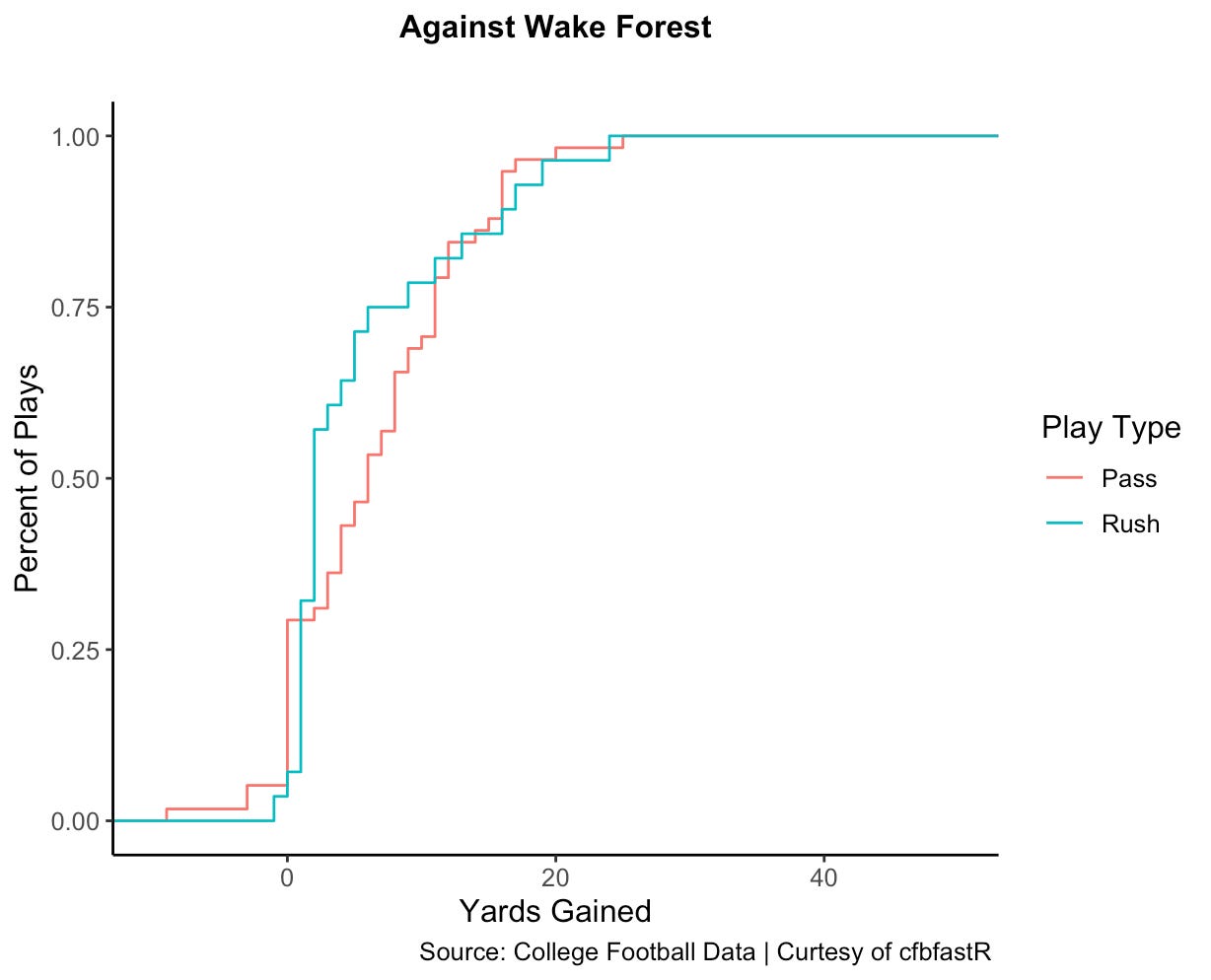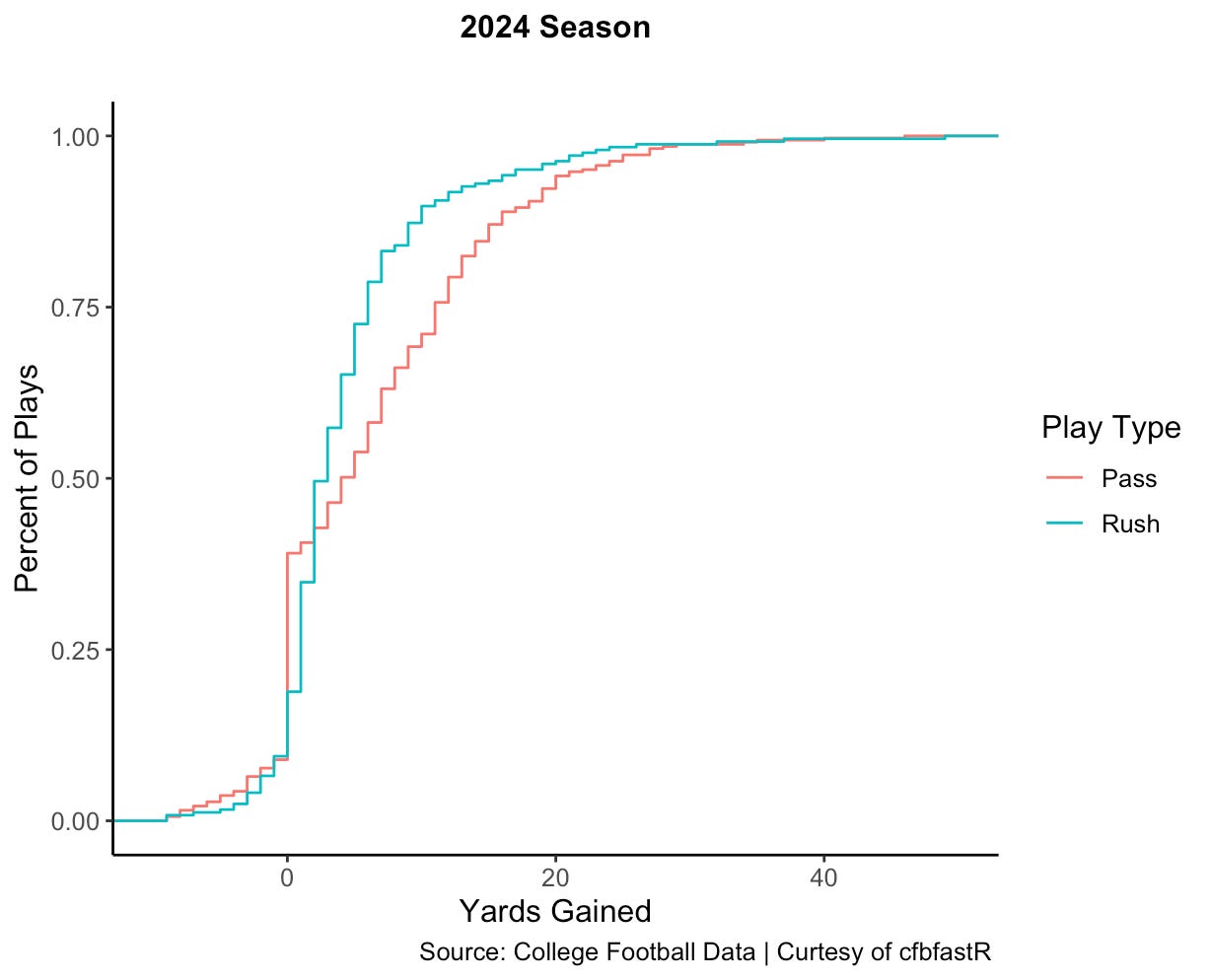Evans Hall: Keep Leaning into the Passing Game
The offense can sustain creative options and routes.
Credit: Cal Football
Cal earned its memorable first conference win as a member of the ACC against Wake Forest last Saturday…in a win that, for better or worse, was very Cal!
Cal ran 86 plays from scrimmage, opting for passing plays twice as often as rushing plays (58 passing plays and 28 rushing plays). The success rate was similarly lopsided: 55% of passing plays generated a positive expected points added (EPA), whereas only 32% of rushing plays.
But how did Cal compare to other P4 teams?
The plot below shows the EPA per rush plotted against the EPA per pass for P4 conference teams, with ACC teams highlighted. Cal’s EPA per rush was actually more impressive than its EPA per pass relative to other teams (notwithstanding the higher passing success rate).
Because passing and rushing plays are not independent, it can be challenging to evaluate the relative efficacy of each. This is one benefit of looking at standard downs.
But it is also worth considering the cumulative distribution of yards gained by play type. In other words, what percent of passing plays generate a certain yardage gain—and comparing that to the percent of rushing plays the generate the same yardage gain. Do this for each possible yardage gain and you have the cumulative distribution over yards gained.
Plotting the full distribution of gains accounts for the differences in variability by play type. Passing can pose more risks, but generate larger gains (at least, in theory).
The question is, does this pattern, in fact, hold in the data?
The answer is “somewhat.” Looking at the distribution over gains in the Wake Forest game, passing plays seem to somewhat reliably yield at least as many yards as rushing plays.
Running the numbers over all offensive possessions during this season, passing seems to (more or less) outperform rushing in general. While ~50% of rushing plays generate at least 4 yards, ~55% of passing plays generate the same gain. The differences in probabilities of yardage gains only grow more pronounced from there: ~25% of rushing plays generate at least 8 yards, whereas ~40% of passing plays generate the same gain or more.
All of which is to say, keep the passes coming. The offense can sustain creative options and routes, especially with Tobias Merriweather and Kyion Grayes back in the rotation.






Just reclassify Ott as a WR
The only problem with the Bear Raid 2.0 is defense fatigue. Yes, by all means score as much as possible, but we still need to chew time with runs.